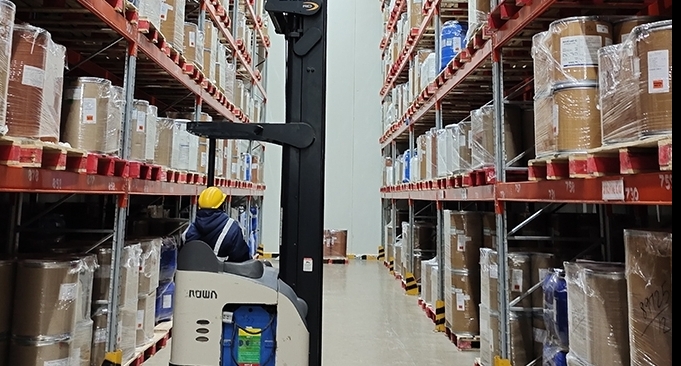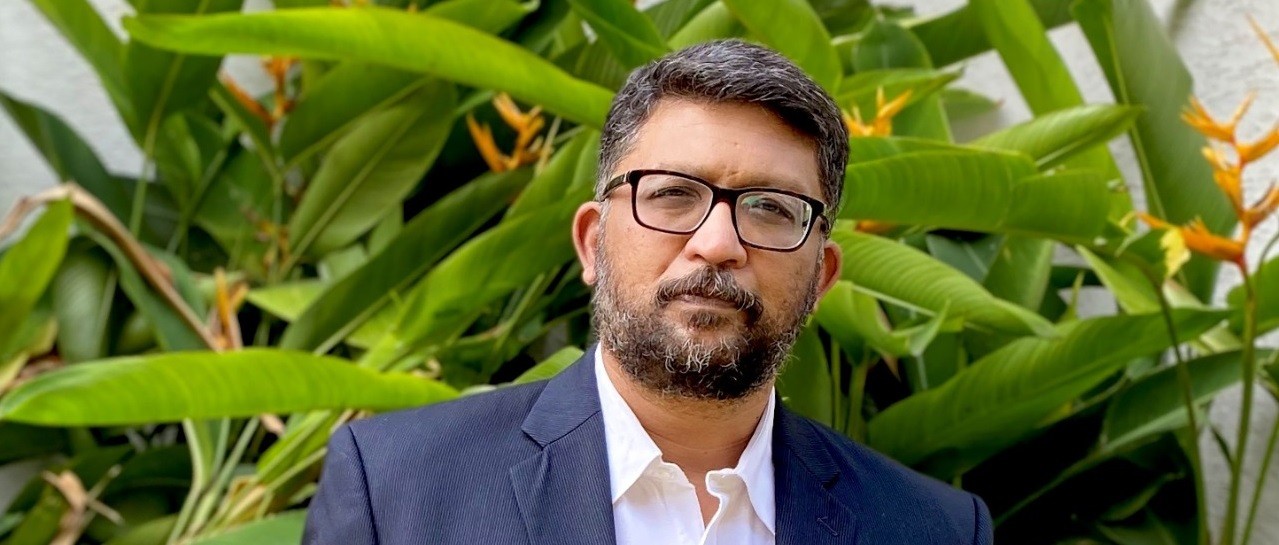Tech upgrades are changing warehousing
Warehouses today are tech-driven hubs using WMS, guided vehicles for stacking and related services and blockchain-linked IoT devices so that the entire delivery process is seamless.

Warehouses are tech-driven hubs using warehouse management systems, automated vehicles for stacking and blockchain-linked IoT devices for tracking so that the entire delivery process is seamless - right from the factory to the customer.
A warehouse is, in simple terms, a building for storing goods. Warehouses are used by manufacturers, importers, exporters, wholesalers and transport businesses to store goods including spare parts, components or finished goods.
Warehouse also refers to a commercial place for storing goods while a godown is generally used by retailers for storing their own goods.
Mechanised warehouses (using conveyors, sorters, and other mechanised equipment but not necessarily automated) accounted for 15 percent of total warehouses while only 5 percent of total warehouses were automated, according to a study by DHL.
“Technology in the logistics sector should be to lower product cost, increase productivity and leverage efficiencies,” according to Stan Wraight, president and CEO, Strategic Aviation Solutions International (SASI).
Benefits of using 3PL provider & warehousing
So, what is third party logistics (3PL)? 3PL allows you - an exporter, importer, manufacturer - to outsource operational logistics from warehousing, all the way through to delivery, and ultimately enables you to focus on other parts of your business. 3PL companies provide many services relating to logistics of the supply chain, including technology solutions.
The biggest positive - focus on other aspects of your business such as sales, marketing and product development.
3PL service providers offer cost reduction, capacity expansion depending on demand, better customer experience and ability to test new markets. Now, the downside - lower control over the delivery process, large upfront investment, and more distance between you and customer experience.

"Cost optimisation and variability management can be further given a boost with the adoption of the right technology platform which will provide full visibility across the value chain."
Rampraveen Swaminathan, Mahindra Logistics
Makeover of warehouses, where is it headed
Unlike earlier days, warehouses today are tech-driven hubs using warehouse management systems (WMs), guided vehicles for stacking and related services and blockchain-linked Internet of Things (IoT) devices so that the entire delivery process is seamless - right from the factory to the customer.
The boom in e-commerce has resulted in the much-needed transformation, and industry as a whole has progressed in terms of new technologies that help the unorganised sector to become a little organised, Rampraveen Swaminathan, MD & CEO, Mahindra Logistics (MLL) told ITLN. “Cost optimisation and variability management can be further given a boost with the adoption of the right technology platform which will provide full visibility across the value chain.”
From operating with very few locations in 1993 without a master system to today, Snowman Logistics has been able to incorporate a world-class ERP system that enables real-time traceability, and complete tracking of trucks from Gate in to Gate out that helps optimise warehousing operations with 100 percent inventory accuracy, Bhushan Paralkar, general manager IT and business excellence, Snowman Logistics, told ITLN. “Further, in-vehicle and chamber temperature monitoring with alert systems ensures secure and timely measures for absolute accuracy and real-time updates.”
Jeena & Company always looked at technology adoption as a strategic and business augmentor tool, said Meheriar Patel, CIO, Jeena And Company. “We have evolved, scaled, and also have the best logistics business use-cases like automation in technology offered to both our internal employees as well as our customers. We run our own internally developed freight forwarding platform as a product, the best in Industry. We also run multiple WMS systems. Our complete infrastructure is cloud-based with a hybrid structure in working. We also run business intelligence as a key data-driven model for success.”
Over the years, MLL transitioned from manual to digitised and automated processes across all activities - be it data collection & reporting, tracking of vehicles, to sales management among others, Swaminathan added. “In recent years, our drive has been towards integrating varied platforms for seamless dataflow.”
Snowman has successfully incorporated a hybrid model where artificial intelligence (AI), auto alerts, and tech-enabled responses solve various challenges for best customer services. “Snowman has also introduced an online aggregation Platform (SNOWLINK) that enables us with fast and accurate responses from our partners. Other tech features include event-based and interval based auto SMS, email alerts, and mobile application for warehouse compliance checklist,” Paralkar said.
“We run our own internally developed freight forwarding platform as a product, the best in Industry. We also run multiple WMS systems. Our complete infrastructure is cloud-based with a hybrid structure in working. We also run business intelligence as a key data-driven model for success,” Patel said.
“We have always used a technology-first approach since its inception in 2014,” said Santosh Desai, CTO, Blowhorn. “Before doing our first trip for marketplace mini-trucks, we had a customer app to book the truck with all pickup and delivery details with multiple stops and a driver-partner app for transparent tracking to the customer. The idea was to always automate the supply chain processes and make the process faster and reliable via technology. Once we scaled the transportation side of the supply chain, we used the same approach to carry out seamless orchestration of services via omnichannel integrations like APIs /webhooks/low or no-code OMS platforms so that we can start receiving orders with minimal effort. Warehousing followed a similar genesis: complete integration fulfilment services were built in-house i.e. inbound-allocation-picking-packing shipping to leverage micro warehouse operations and scale to multiple cities and customers with different business processes. With operations capability, process streamlining and technology advanced clustering and route optimisation (AI/ML) algorithms, we are en route to promise a same-day delivery across India.”

"AGVs & IoT generate a lot of real-time data that has to be fed back with enriched instructions from the ML models to reduce wastage and increase throughput and efficiency of the fulfilment centre."
Santosh Desai, Blowhorn
Gone are the days when warehouses were considered sweatshops. Today, they are smart workplaces, and technology has played a big role in it. “I totally agree with you on this,” Desai said. “Coming from a warehousing field in managing square mile warehouses in Europe and Americas to the vertical tall forklift operated ones, warehousing was the last place to re-invest on as implementation costs were very high. With standards of not-for-profit organisations like GS1, all softwares now have made switching easier by building deep tech integration. Batch systems have become more real time and the shipping cycles have reduced from 15-20 days to the same day and sometimes within the hour, from ports and city outskirts to stores within 1 km. With the additional convenience cost to add because of the new consumer behaviour, the technology to churn petabytes in a few seconds via managed cloud services, the innovation in this space is exciting and has many avenues. Some optimise for storage but today the key metric to look out for is turnaround time and throughput. Ability to scale up and down as demand varies makes it imperative to continue innovation in the space.”
Technologies like automated guided vehicles (AGVs), smart IoT sensors and autonomous robots are being explored and will see rapid adoption in near future, Swaminathan said. “At Mahindra Logistics, we actually are focused on creating an integrated tech player. What that means is that we have individual tech staff for specific service lines so we have a TMS for transport management for line haul. In addition to that, we have undertaken several pilot projects involving drones, IoT devices etc. In the next five years, we intend to convert these pilots to full-scale deployments across our customer sites along with several other trends that are time-bound.”
AGVs, IoT, drones, AI, Big Data are all in play “in a big way,” Desai told ITLN. “AGVs & IoT generate a lot of real-time data that has to be fed back with enriched instructions from the ML models to reduce wastage and increase throughput and efficiency of the fulfilment centre. With active/passive RFIDs tracking of shipments, inventory is now real time and consumers have become nuanced about the supply chain transparency. Computer-aided vision also helps in terms of knowing stock levels, replenishments and gives a 360-degree view of the warehouse, helping drive optimisation.”
Patel said, “We are foremost in AI, Big Data, and we have deployed these technologies in our application usage. They have been advantageous in our operations and we are working towards future planning in this direction.”
Power of Big Data
Swaminathan went on to say that the power of Big Data is helping in forecasting accurate future outlooks, optimising performance efficiencies and improving decision-making capabilities. “Digital fitness will be a prerequisite for success.”
Big data, wearable technology and cloud computing are already changing the way we see warehouses. In the coming days, warehouses will not just be smart, they may be all around us!!!
Swaminathan said: “The largest area where we are investing a lot is in the business that actually is in technology and digitisation. So that includes investments in driving integrated technologies, IT technology suites across transportation warehousing and so on, but it also includes greater investment in automation systems, robotics and so on to drive more shop floor automation and integration across our network.”
Snowman has also invested in developing an integrated operational system, BlockChain model of supply chain and logistics, inventory management using RFID, barcode management and conveyor systems to conduct regular operations and increase productivity. Paralkar said: “Agile and adaptive learning skills to stay ahead in the technology curve and future innovations towards a sustainable future like IoT-based refrigeration monitoring and analytics solution is what Snowman is looking for.”
“It's in nascent stages,” Desai said about blockchain adoption, “but I believe there will be a time where more muscle will be added to it. Pharma, medical equipment and digital currency have a role to play and then provenance is key to supply chain and BlockChain is naturally the right stack.”
Patel also felt “blockchain for most in logistics is still in an evaluation mode and we have been testing Blockchain with various global majors. There has been good success in this direction. We will be happy to participate in the blockchain journey when the ecosystem has a complete buy-in.”
Collaboration and interface-driven approach on tech platforms will be key differentiators, Patel added. “We will also operate on global systems which would be proven and tested solutions to offer the best to our customers. We will lead in our digital offerings and make them even better and easier to operate.”
Technology is also likely to lead to the next round of expansions, according to Desai. “We believe that efficiencies unlocked through our tech stack will lead to increased business growth both in the big metros as well as in tier-2 and tier-3 cities. As the Indian consumers' transition to expecting fast delivery networks for everything he consumes, we expect aggressive demand for our full-stack integrated services. In fact, given its relatively lower base, we expect and are positioned to support exponential growth in demand, particularly in tier-2 and tier-3 cities where this story is just starting to play out.”
This article was originally published in Indian Transport & Logistics News' September - October 2021 issue.

Jyothi Shankaran
Associate Editor, STAT Media Group. He has worked with IndiaSpend, Bloomberg TV, Business Standard and Indian Express Group. Jyothi can be reached at jyothi@statmediagroup.com


